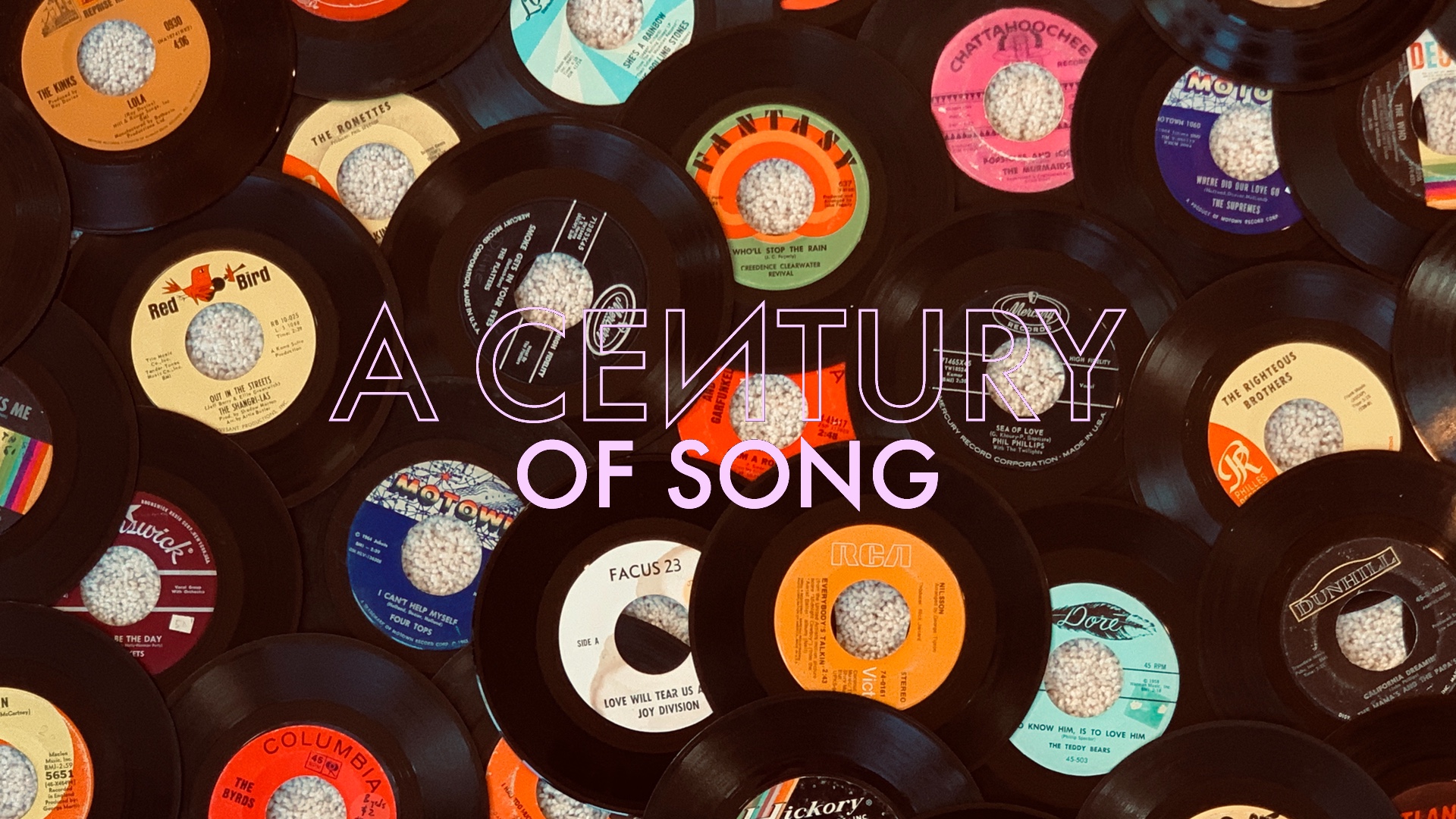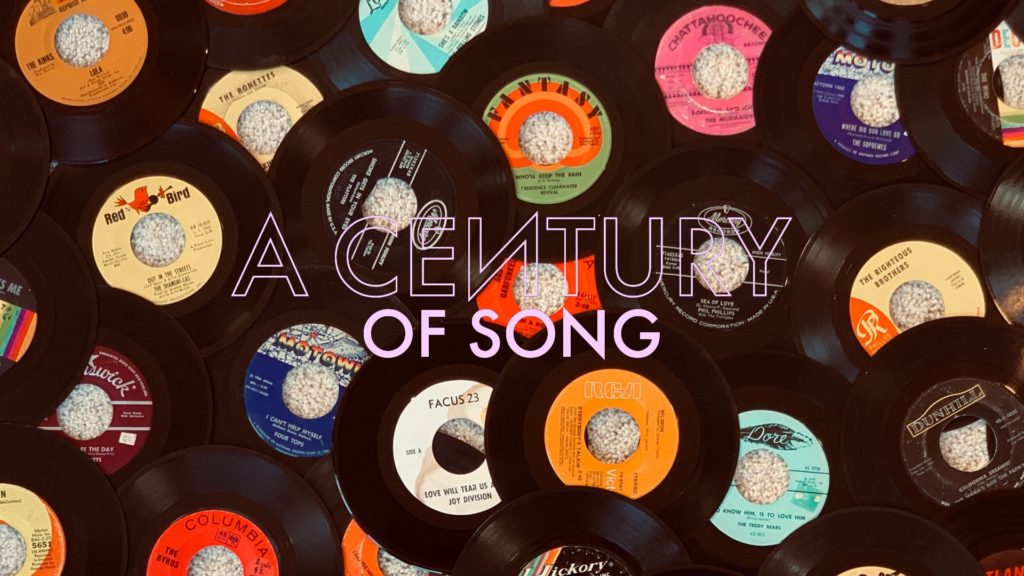
A Century of Song is an attempt to summarize 100 years of popular music through 1000 carefully chosen tracks. Included within this list are landmark singles, stellar album cuts, huge hits, hidden gems, and more than a few personal favorites. Read the introduction for the project here, and enjoy the embedded videos and Spotify playlist.
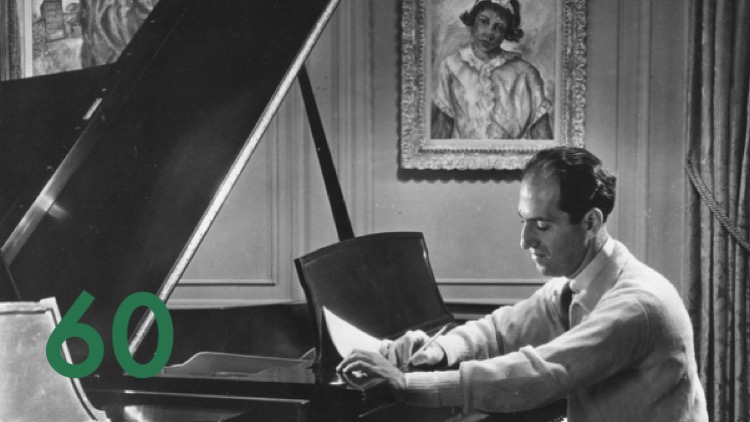

In 1924, orchestra leader Paul Whiteman commissioned George Gershwin to compose a piece for his upcoming concert, “An Experiment in Modern Music.” Only twenty-five at the time – and not yet established as one of Americas foremost composers – Gershwin was initially reluctant to participate – though he and Whiteman had previously collaborated successfully on a piece for The Scandals of 1922. Despite his reservations, Gershwin ultimately relented, composing “Rhapsody in Blue” in relatively short order, and finishing it roughly a week before its premier.
It was on a train ride from New York to Boston that Gershwin came up with the initial inspiration for “Rhapsody.” Finding a musicality in the sounds of his travels, and prompted by the rapidly-changing scenery before him, Gershwin conceptualized a piece that would shift between several different motifs: rising and falling in dramatic fashion, while capturing the excitement of the modernizing city of his birth.
Much of New York’s modernization had already been synthesized by the sounds emerging from the city’s jazz clubs. While Gershwin’s background was in the staid, formal world of classical music, he was intrigued by the stylings that personified Harlem, and the countless speakeasies that popped up under the not-too-watchful eye of prohibition agents. “Rhapsody in Blue” would be his attempt to merge those dueling, seemingly incompatible worlds in one singular piece.
“Rhapsody” was an instant hit, earning rapturous approval during its premier, and winning over critics for its deft incorporation of modernistic flourishes. Quickly, Whiteman’s orchestra would rush into the studio to cut an abridged version of the track, with Gershwin himself on the piano. A second – slightly longer, and more dynamic – version would be recorded by Whiteman and Gershwin in 1927.
Few compositions have done more to change the course of popular music than “Rhapsody in Blue.” However, it is far from just a relic of its time. Iconic recordings of the piece would be made by the likes of Eugene Ormandy and Leonard Bernstein; Its motifs would be referenced in a range of films and television programs, such as Manhattan (1977), The Critic, and The Great Gatsby (2013); Brian Wilson would claim the piece as one of his favorites, and the primary inspiration for his beloved Smile project. “Rhapsody in Blue” stands as one of the quintessential American compositions, classical, jazz, or otherwise.
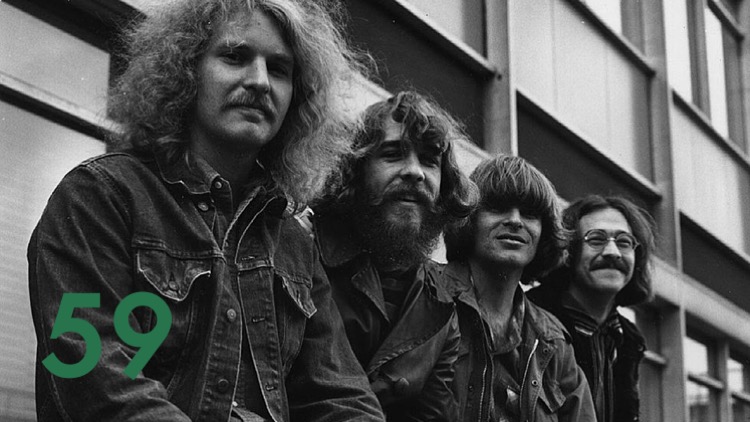

Ubiquitous as it may be, “Fortunate Son” stills packs a considerable punch. A scathing criticism of Vietnam-era draft policy, the song exemplifies the argument that the Cold War-era conflict was just another “rich man’s war, and poor man’s fight.”
In other well-known Creedence Clearwater Revival tracks, John Fogerty tended to hide his political commentary inside of allegorical references. Where there was a knowing symbolism behind the meaning of songs like “Run Through the Jungle” and “Who Will Stop the Rain” (#94), there was no such plausible deniability when it came to “Fortunate Son.”
The targets of Fogerty’s scorn were as clear as day: sons of millionaires, politicians, and the well-connected. Unlike the working-class kids who found themselves shipped off to fight in a conflict that a record number of Americans viewed as unjustified, these privileged few were able to hide behind their so-called patriotism from a protected vantage point.
Just as the track pulls no punches lyrically, “Fortunate Son” brought the heat in a musical sense as well. This combination of lyrical and musical fury would make the track a no-brainer for film and television references to the war in Vietnam – to a point well beyond that of cliche.
Regardless, “Fortunate Son” remains a powerful track – one of the most iconic rock songs of its time. Despite no shortage of worthy competition, it stands as the finest moment of the Bay Area band’s brief, but thrilling, five-year run in the spotlight.
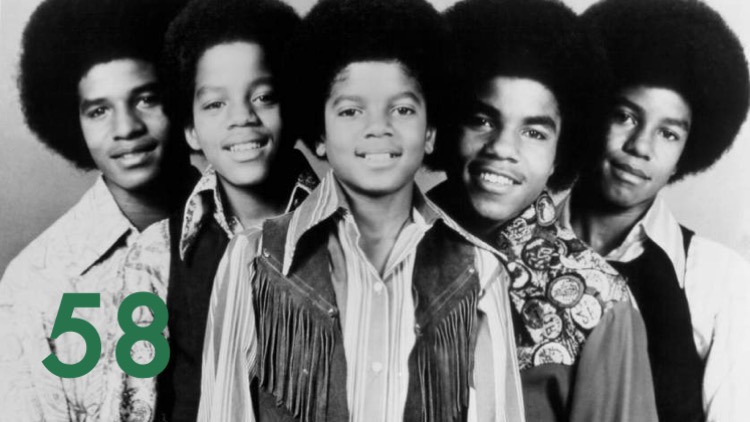

The Gary, Indiana siblings known as The Jackson 5 released two singles on the small, regional Steeltown Records before landing a deal with Berry Gordy’s Motown imprint in 1969. The venerable Detroit label was in a transitional phase – caught between the immaculate pop of their mid-sixties peak and the harder-edged funk sounds that would define its equally successful seventies.
In the Jacksons, Motown had secured a somewhat-curious act. Aside from the inner-family dynamic that would serve as a dark undercurrent to a story of virtually-unprecedented commercial success, the group was led by the remarkable talent and charisma of its youngest member: eleven-year old Michael. Though he was left somewhat cold by the group’s first recordings, Gordy was convinced that he had a star on his hands.
That confidence in his new act led Gordy to repurpose a song that had originally been intended for Gladys Knight and The Pips into the Jacksons’ first Motown single. Written by Gordy and other members of the label’s “The Corporation” team, “I Want You Back” would’ve been a hit in the hands of any Motown act, but paired with the fresh-faced charm of the Jackson brothers, it became one of the most iconic singles in the history of popular music.
“I Want You Back” is three minutes of vibrant, effervescent pop that virtually explodes from the speakers. Even though Motown didn’t correct – and possibly contributed to – media reports suggesting that Michael’s age was in the single digits, the nuanced, plaintive vocal performance could scarcely have been believed to be the work of a fifth grader. Equally compelling was Wilton Felder’s joyous bass line – one of the most unforgettable bass performances of all-time.
Of course, Berry Gordy’s prediction of Michael Jackson’s star power was correct. After the initial wave of “Jacksonmania” began to recede, Motown was quick to launch Michael’s solo career. In time, he would become the biggest pop star on the planet. Though Jackson would have countless iconic moments on his own, none would quite match the charm of the track that introduced him to the world.
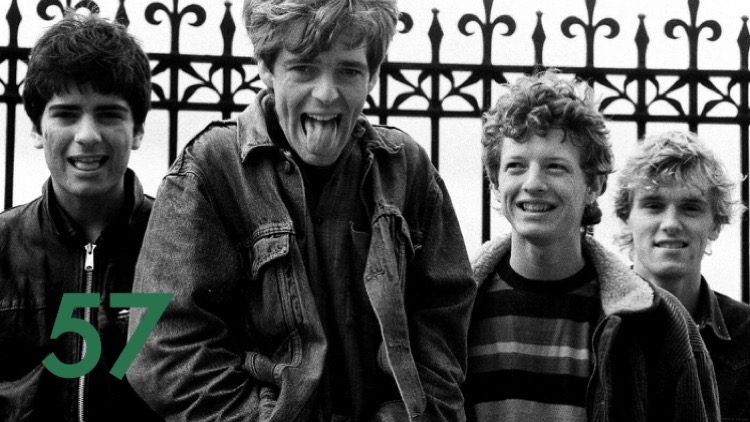

Of course, any rock group from Liverpool is bound to stand in the shadow of The Beatles, but with their Merseybeat-inspired sound, The La’s practically invited comparisons to the Fab Four. With their second single – 1988’s “There She Goes” – the young quartet managed to capture lightning in a bottle, and crafted a track that matches nearly anything in The Beatles’ catalog.
While “There She Goes” is an immaculate pop song, it was not a hit upon its initial release – failing to chart in the UK. Re-recorded for The La’s’ self-titled 1990 debut album, the song had a bigger impact the second time around, hitting #13 at home, and making it into the top fifty in America. Its success would be mitigated however by the band’s shifting lineup, and frontman Lee Mavers’ lack of enthusiasm for what would ultimately become the group’s lone LP.
Despite its qualified commercial performance, “There She Goes” is a masterful display of song craft. Its instantly recognizable opening riff drew a direct connection between the folk rock of the sixties and the jangle pop of the eighties, while setting a foundational stone for the emergent Britpop movement. Coupling its impossibly-romantic nature with a potentially-dark undercurrent – specifically long-running rumors of the song being about heroin, which the band denied – “There She Goes” had all the makings of a classic.
Though the track was not a major hit at the time of its release – or re-release – “There She Goes” has ultimately worked its way into the fabric of pop culture through countless covers and film/television references. None of those homages come even close to improving upon the simple beauty of the real thing. There is, after all, no way to improve upon perfection.


Like most listeners of my generation, I was first introduced to one of America’s greatest folk songs by way of Nirvana’s 1993 performance on MTV’s Unplugged series. Closing out their set with a powerful take on a composition of mysterious origins, the Seattle group turned in one of the most memorable versions of “In the Pines.”
As haunting as Kurt Cobain’s performance of the track (also known as “Where Did You Sleep Last Night?”) was, it’s Huddie Ledbetter’s 1944 recording for the Musicraft label that stands as the definitive take. Ledbetter (aka “Lead Belly”) had been performing the song for several years before ever recording it, so despite this being merely his first of numerous recordings of “In the Pines,” it aches with the weariness of a man that had sung the song many times before, and felt it intensely.
It is believed that Lead Belly learned “In the Pines” from an early recording of the version that Cecil Sharp had compiled in 1917. The track’s allegations of infidelity – and its macabre details – made for particularly compelling material; Lead Belly’s commanding vocals and 12-string guitar work leant it an even deeper sense of gravity. Coupled with the stark atmosphere of the bare bones recording, it makes for a track that is nothing short of arresting, even eighty years after its arrival.
The eerie presence of “In the Pines” – and its powerful sense of urgency – undoubtedly drew Cobain to the song. By the time it appeared as the final track on the 1994 album drawn from the Unplugged sessions, Cobain had died by suicide. Standing as it did as something of a final artistic statement from a generation-defining figure, the song would only become more deeply embedded into the pages of American folklore.
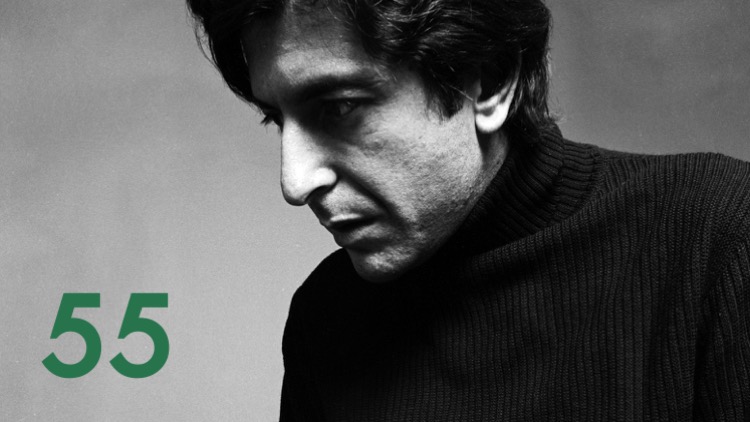

Few artists have ever emerged with an album as fully formed as Songs of Leonard Cohen, but Leonard Cohen had a couple of advantages over most of his fellow singer-songwriters. First, Cohen was already established as a published poet well before the album’s release. Second, he was thirty-three at the time that Songs of Leonard Cohen was released at the tail end of 1967.
The song that introduced Cohen as a recording artist, “Suzanne” had initially been published as a poem, and then released as a single by Judy Collins in 1966. Cohen’s own version would appear as his first single, and as the alluring opening track to Songs of Leonard Cohen.
Based upon a platonic relationship with a dancer named Suzanne Verdal, “Suzanne” is remarkably sensual for a song about a non-romantic friendship. While Cohen’s monotonic vocals may come across to some as detached, there is a richness and elegance to his lyrics that suggest a deep emotional connection between the track’s narrator and its muse.
Despite its intensely personal nature, “Suzanne” would become one of the most frequently referenced songs of its time. In addition to Collins’ 1966 version, several prominent covers – and some great not-so-prominent ones – have been released over the decades since Cohen’s version appeared. Though it arrived at the very beginning of a long and distinguished career, it remains the most perfectly realized piece of work from one of the greatest songwriters of all-time.
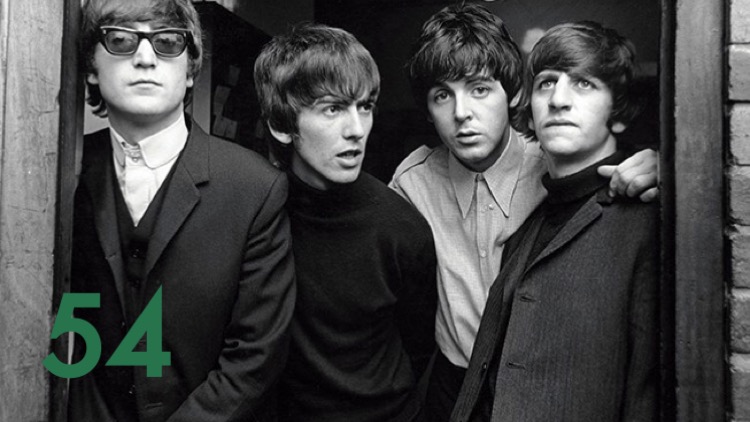

Though one could argue that The Beatles’ career was as much about incremental evolutionary progression as it was about radical shifts, there was something decidedly different about Rubber Soul. While tough to define, that difference in the band’s second full-length album of 1965 set it apart from everything that had come before in the group’s catalog.
More than any other track on Rubber Soul, it was “In My Life” that represented a turning point in The Beatles’ artistry. Easily John Lennon’s most refined and introspective composition to date, the song was a master class in songwriting, and a giant leap forward for the already-brilliant Beatle frontman.
While “In My Life” found Lennon in an uncharacteristically reflective and nostalgic mindset, there was a melancholic undercurrent that connected it to the finest work of both his past and future. That melancholy is most piercingly reflected in Lennon’s recall of those now missing from his life – seen by many as a reference to the original Beatle bassist Stuart Sutcliffe, or Lennon’s mother Julia, who died when he was seventeen.
Much debate exists over the nature of the song’s musical construction, as Paul McCartney claims to have had a major part in its development – a claim supported by its resemblance to McCartney’s more buoyant melodic style. Either way, its charmingly low-key arrangement – with the flashy addition of George Martin’s harpsichord-simulating varispeed piano solo – makes for one of the most affecting and beautiful tracks in The Beatles’ peerless discography.
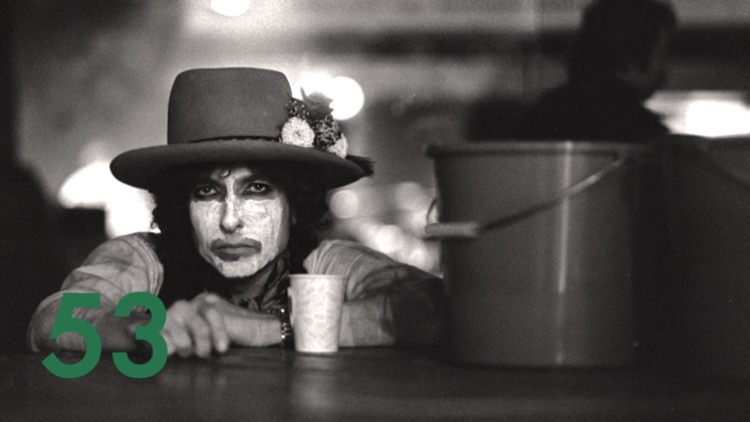

Though it’s widely believed that there’s little about “Tangled Up in Blue” that is actually autobiographical, the album-opening piece remains the most compelling song from Bob Dylan’s introspective 1975 masterwork, Blood on the Tracks – a record that stands alongside the finest achievements in his massive catalog.
Dripping with vivid lyrical imagery, “Tangled Up in Blue” rides its engaging melody through a densely tuneful six-minute travelogue. The sprightly track is embellished by an assemblage of warm, jangly, open-chord acoustic guitars – harkening back to Dylan’s folk roots, but very much in line with the contemporary singer-songwriter scene.
Dylan’s first-person narrative takes him through a variety of memorable backdrops, and encounters with an even more memorable cast of characters. He paints the song with the detail of a Dutch master, crossed with the broader brushstrokes of an impressionist; the end-result being eminently quotable, but somewhat inscrutable.
This wasn’t entirely new territory for Dylan, as the song could be seen as something of a callback to the dense, but non-linear, work of his mid-sixties peak. That it served as the introductory statement to an album forged in the intensity of a deteriorating marriage only made it more alluring to listeners – who, perhaps, hoped to view it as a particularly intimate peek behind the curtain of a notoriously reserved artist.
That sense of intimacy was further suggested by Dylan’s live performances of the song during his legendary Rolling Thunder Revue tour of 1975, which found him eschewing the carnivalesque atmosphere of that road show for a stripped-down solo arrangement. Like so many of the greatest songs in his discography, “Tangled Up in Blue” would take a radically different form on stage, but remain every bit as compelling.


Derived from a spiritual – one that Nina Simone had knowledge of due to her minister mother’s use of the song during revival meetings – “Sinnerman” features as the harrowing closing track to her finest album, 1965’s Pastel Blues. It is the utterly unforgettable high point in the catalog of one of America’s truly singular artists.
Nina Simone is at the peak of her craft on “Sinnerman,” and her powerful performance is abetted by her remarkable backing band. Over ten intense minutes, the track surges and recedes on the strength of Simone’s piano, and its nimble – almost violent – interplay with the work of drummer Bobby Hamilton.
That burning nature of the song’s instrumental backing only gives the song – and its message of sin, repentance, and judgement – an urgency that no other track in Simone’s stellar body of work can quite match. Paired with her preceding interpretation of Billie Holiday’s monumental “Strange Fruit” (#601), it makes for a chilling – and thoroughly exceptional – end to Pastel Blues.
The range of Nina Simone’s artistry was virtually unrivaled by any of her contemporaries. As a pianist, vocalist, and (frustratingly-rare) composer, she forged her own unique path – becoming increasingly uncompromising as she reached her mid-sixties pinnacle. The industry that she was only a part of by necessity had hoped to paint her remarkable talents into a manageable (and profitable) corner. With “Sinnerman,” Nina Simone made an unflinching masterwork on her own terms.
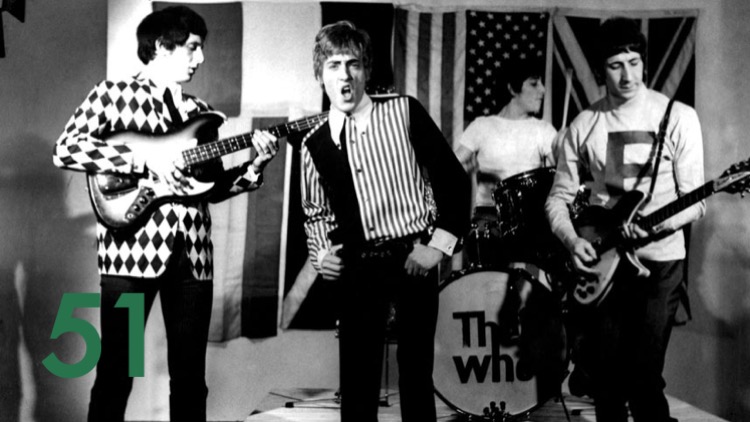

In the last installment of this project, I mentioned that “The Kids Are Alright” (#69) is my favorite song by The Who, but it’s hard to deny that “My Generation” is the group’s definitive recording. Released as the band’s third single – and title track to their 1965 debut LP – “My Generation” would become one of the most iconic tracks of the British Invasion, and a timeless testament to rock music’s rebellious nature.
While The Kinks had turned up the volume on their own breakthrough singles – “You Really Got Me” (#137) and “All Day and All of the Night” (#239) – The Who far surpassed their London counterparts, at least in that regard. Much of this had to do with the immense power of the band’s individual musicians: guitarist/songwriter Pete Townshend, bassist John Entwistle, and drummer Keith Moon.
Each of the three leave their own indelible mark on “My Generation”: Pete’s power chords and shrieks of feedback; John’s solo features in the instrumental break; and Moon’s whirling dervish drum work. It was that last element that proved The Who’s most volatile, and provided the seething energy that pushed the group beyond their peers.
Topping it all off were Townshend’s lyrics, delivered in the unforgettable, stutter-stop vocal performance of Roger Daltrey. While some have argued that Daltrey would take time growing into a frontman worthy of the cacophonous-but-melodic lot behind him, his presence on “My Generation” is undeniable.
In time, The Who would become standard-bearers for rock and roll grandeur. However, never were they more charismatic, thrilling, or better than on their initial run of singles. Despite no lack of formidable competition, this is the track that has shaped their legacy more than any other.


